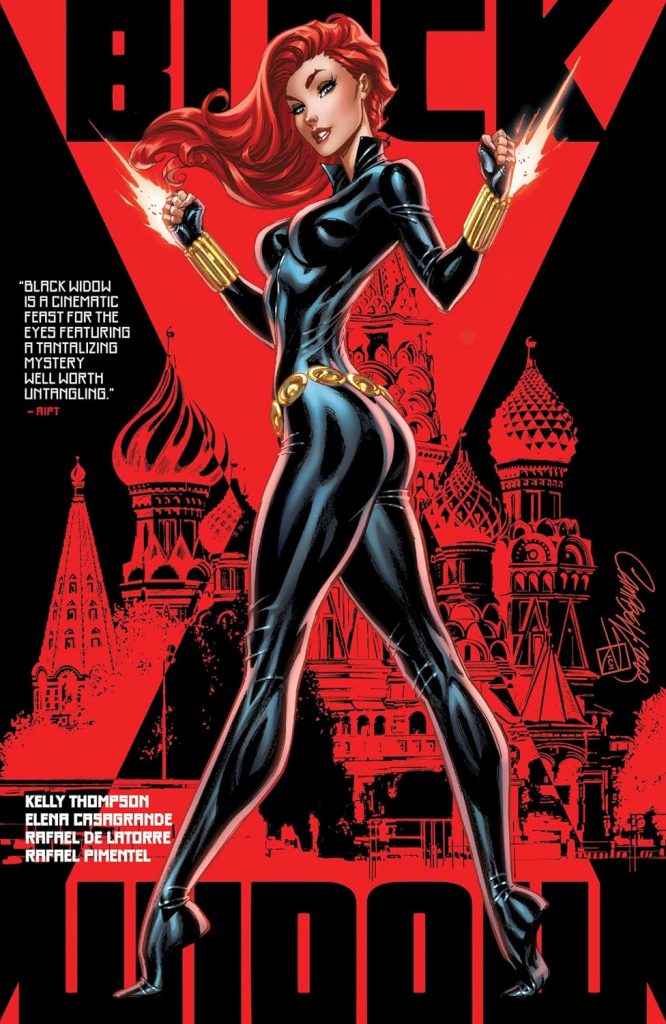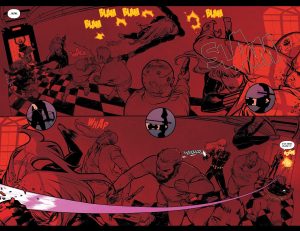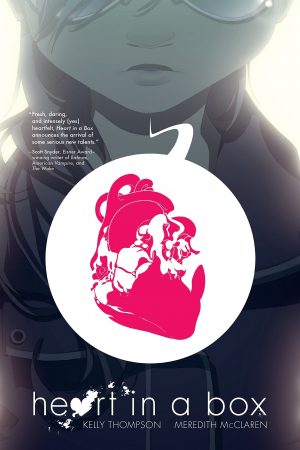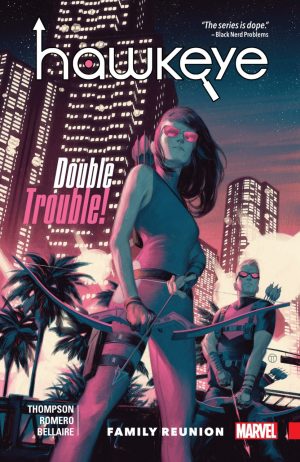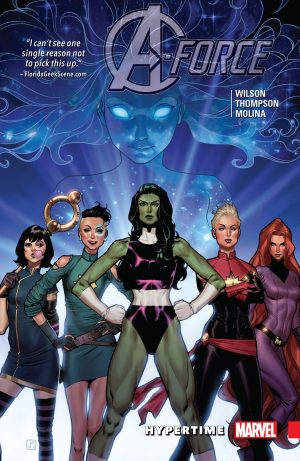Review by Karl Verhoven
Kelly Thompson was handed the Black Widow to curate with the knowledge that 2021’s movie was on the way, and her run extended to three graphic novels, by name The Ties That Bind, I Am the Black Widow and Die by the Blade. All are combined here, with the first and last being very good indeed, while the middle volume shifts gears and is still readable, but not as satisfying.
Dealing with that first, it’s because Thompson has a distinct and beguiling mystery to open the series, and once that’s solved the cast broadens, meaning less space for Natasha Romanova herself, and the villain of the piece eventually disappoints.
There’s definitely no disappointment over the first third in which the Black Widow is missing. Before then, there’s a brief introduction in which Thompson establishes just how proficient Natasha is, battling her way through an assortment of thugs in order to steal a hard drive from a very well guarded location. It’s a surprise, therefore that when next seen several months later she’s working on a building site, married and with children. As undercover missions are par for the course in her trade, her allies are initially reluctant to make themselves known, but they’re not the only ones monitoring her. It’s a story of two halves, the mystery followed by the righteous retribution and both halves are great. “I’ve remade myself so many times”, ponders Natasha, “but never like this”.
Several artists contribute overall, but the elegance of Elena Casagrande is the primary asset. She has the greatest sense of dynamism, sets the action flowing like no other, and her illustrative composition makes the most of every scene. However, to a greater extent than usual, particularly over the opening story, Jordie Bellaire’s colouring really seals the deal. She takes her lead from Natasha’s distinctive red hair, making that stand out on page after page and using washes of red over other pages as a connecting motif. The sample spread shows a technique Casagrande employs particularly well with multiple figures of the Black Widow as she progress athletically.
While introducing a broader cast slows things down a little, there’s a reason for them in the final section requiring the Black Widow to have allies, and a better villain in the Living Blade, the world’s greatest swordsman. However, that comes with the inbuilt and never exploited downside of vulnerability from distance. Never mind, as it’s a quibble compared with the thrills on offer, and the surprising solutions applied to surprising problems.
Thompson’s stories hit the spot for showing Nastasha as astonishingly proficient whether spying, in combat or at the start as a caring mother. The mysteries are puzzling with viable solutions, the flashbacks broaden Natasha’s character and the art’s notable, with Casagrande standing out. Up there with the best Black Widow.
